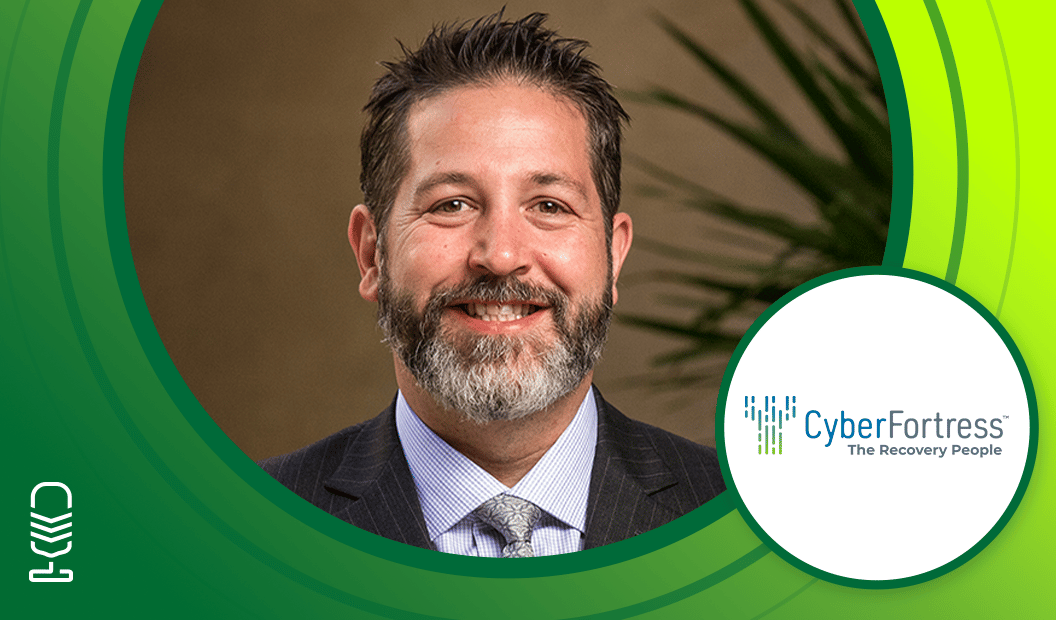Fuel Growth Podcast: Building a Customer Acquisition Strategy with Bret Piatt, CyberFortress
Customer-centricity means putting the customer first and at the center of everything that you do. You might think to yourself, that’s easy. I can do that. But is it really that simple? We found out today with a very practical set of tips on how to build a product-led, customer-centric, and truly authentic company.
On this episode of the Fuel Growth podcast series, my co-host Lizzy and I got the opportunity to sit down and speak with Bret Piatt, CEO of CyberFortress, a global company providing data backup services built for the world’s best recovery. CyberFortress’s ultra-secure backups were created with one main goal in mind—to completely recover ALL of a company’s or employee’s lost or stolen data in the fastest, easiest, most accurate way ever designed.
But while we may be talking about a cybersecurity company, the main topic on Bret’s mind was customer experience and building a customer acquisition strategy.
Want to Hit Your Growth Targets? It All Starts with Putting The Customer First
Customer-centric organizations take steps to understand the customer and act on that understanding by creating a culture that empowers employees to put their needs first. Bret says, “yeah, I’m a product-led CEO. So just listening to people, customers, prospects, and the market to then figure out innovative ways to deliver that unmet need.”
He went on to say, “generally, in the business world, we’re all really smart, and we’re really deep in our own areas of expertise. So we will make stuff very complicated. So one of the steps you’ve got to go through is to simplify the business as much as you can. And then that simplification creates areas for you to then go innovate and drive new change”. When you prospect, sell, or even just sit down and have a candid conversation with customers, you need to speak to them in their own language and really dig to find the questions they have so you can answer them.
Below are five areas Bret touched on in our podcast where you can start today to bring your customers into the forefront of everything you do.
5 Tips on How to Put The Customer at the Forefront of Your Selling Processes
1. Look for Cross-Functional Skill Sets When Hiring
For people who work day-in and day-out in the product, it’s really easy to discover the problems. Sometimes, it’s even really easy to come up with a solution. The challenge comes in when it’s time to organize and put together the team to build the solution.
According to Bret, “you need cross-functional skill sets on your team to take any technology product, or frankly, any product from idea to the store shelf, or webpage where you can buy it.” You need “not only a cross-functional set of skills but a cross-functional set of personalities.” For instance, “if everybody on the team is really impatient and futuristic, then you’re going to rush a product out, that’s not going to be well thought through, and there’s going to be problems. If everybody on the team is super detail-oriented, patient, and responsible and doesn’t want any problems with something, you’re never going to ship the product.”
To balance that, companies should build teams that have the diversity of the skills that are needed, diversity of personality types, and diversity of backgrounds and geographies. If you’re going to launch and sell a global product, the things that you may assume are normal user behaviors in one country may be different from the way users will engage in another country.
2. Use BOTH Outbound and Inbound Marketing Tactics
In our podcast, Bret went on to bring up strategic marketing tactics. He stated, “Over the last decade, there’s been this back and forth of inbound versus outbound [marketing]. And inbound is king…The challenge on inbound is the customer has to know they have the problem [that you can solve]. And then you have to market, in their words and their language to solve their problem. That’s where the balance of inbound versus outbound comes in. You’ve got to understand how the buyer is going to come to you for a solution”.
The more innovative you are, the more differentiated you are, the more you’re solving a problem in a new way, the more they’ll want to listen to your marketing. But in sales, you have to also go outbound and get in front of your prospects to get them interested to hear the rest of your story.
Bret went on to say, “you have to be able to do something to establish trust and credibility in order to be able to outbound. And if you don’t have trust and credibility, they’re not going to answer that outbound phone call. Imagine you are an executive and a brand new research firm that you’ve never heard of calls you and says, ‘Hey, we would like to offer you 30 minutes of free advisory work on your business and your competitors’; you’re probably going to ignore that. But, if Gartner reaches out and says we’ll give you 30 minutes of free advisory on your business and your competitors, you may take them up on that.” Credibility is critical in outbound, and you have to build credibility in both your company brand and into your sales reps’ personal brands. This is the new challenge for businesses where they now have to balance inbound and outbound to create need, trust, and credibility.
3. Build a Team that Sells to the Customer, Not to the Product
Relationships and networks are built one at a time. When it comes to building a rockstar selling team, Bret had the following example to give, “we’ve been doing relationship-based selling and relationship-based marketing forever. Before the internet, you had to lean solely on your salespeople’s network. For example, you might have a rep that has experience selling to Walmart. Maybe they were working for a breakfast cereal company for a decade, and they sold breakfast cereal to Walmart. The network that that person has, it isn’t a breakfast cereal network, they know how to sell to Walmart. They know how the shelf space works there, they know how the buying process works, they know how the shipping and fulfillment center process works. So if you’re gonna launch a new tennis shoe company, and that breakfast cereal person was the most successful at selling to Walmart, you can go hire that person. I bet they can sell tennis shoes to Walmart”.
When you’re looking at some sort of relationship-based marketing and selling, you don’t necessarily need an expert in your industry; you may need an expert in the customer or that group of customers. Bret made that clear when he said, “it becomes much easier to train them on the details of your product, or even your industry if they’re already an expert in the customer. I’ve found it hard to train somebody to be an expert at the customer if they don’t have any of those networks and relationships”. It all comes back to that slow, long piece of building trust and credibility with your customer base.
4. Help Your Reps—Warm Up The Leads to Establish Credibility
Sales reps, especially newer ones to your industry or company, may struggle to get their foot in the door. Bret echoed that by stating, “If reps are working for a large company with a very established brand, then they may be able to get through those initial filters. But if you have no personal network and no personal history, and you don’t have an established brand that gives some level of trust or credibility, it’s very difficult for those early career people”.
When your company is at the early stages of the buying journey, and you don’t have that initial credibility necessarily in the marketplace yet, getting that founder, CEO, or executive leader in front of your prospects initiating the dialogue is key. It’s going to make a difference at the end of the day by warming up the handoff.
Your first step may be making that first intro email and the first intro call with the customer to give that SDR a warm handoff. Bret went on to say, “if right now, you only have a 2% response rate, and you can have a 20% response rate by having your executive team members make those initial outreaches to their network, just do it”. If those are your target customers, helping warm up, the leads can be a game changer at the top of the funnel.
5. Hire People Who Carry the Same Values and Expectations as Your C-Suite
Culture can’t be aspirational. It has to be grounded in reality. Bret said it best when he told us, “if you get an executive team together, and they say here’s our three core values or whatever else, and nobody in the company has those core values except for the people in that room, then you just have to be prepared to turn over all of your employees.” You have to have an authentic culture that everybody lives up to—customers expect consistency and authenticity from your brand.
You Just Can’t Go Wrong With Customer-Centric Processes
“If you look at that true breakthrough innovation, you can get there by listening to your customer’s problems,” said Bret, “and when you do that, you can figure out exactly what the customer wants from the product and the problem they’re trying to solve with the product.” It all starts by listening to customers and solving their use cases in a simplified manner or a more efficient manner
Want to learn more? Listen to our full podcast conversation here for a more in-depth look into how switching to a product-led sales model can be the driving force for acquiring, retaining, and growing your customer base. If you want to catch up on our previous episodes, you can do so here or on your favorite podcast app.
As we kick off season two of our Fuel Growth Podcast, Lizzy and I want to thank everyone who has tuned in and made season one so great. It makes launching season two that much better! We have more exciting topics and experts to talk to on the horizon, so stay tuned and see what this new season has in store.



